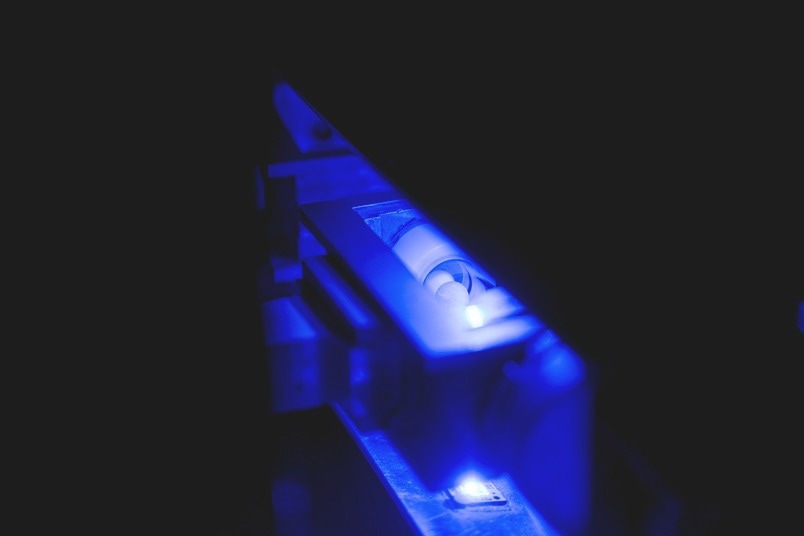Combining mechanochemistry and photochemistry saves 80% energy and 98% solvent in various reactions. Also, the process consumes less time compared to the duration it does in solution.
 Light and mechanical energy interact in this reactor. Image Credits: RUB, Marquard
Light and mechanical energy interact in this reactor. Image Credits: RUB, Marquard
Until now, light-based chemical reactions were generally executed with huge amounts of solvents that are usually toxic. Professor Lars Borchardt’s team at the Chair of Inorganic Chemistry I at Ruhr University Bochum, Germany, was efficient in performing it in the solid state without resorting profoundly to solvents by combining them with mechanical energy in ball mills.
“This provides a sustainable alternative to established synthesis methods,” notes Borchardt. The scientists published their results in the journal “Angewandte Chemie” on February 24th, 2023.
Ball Mills to Replace Solvents
It is believed that the ideal driving force of chemical reactions is light: it is cost-effective, found in abundance, and generates no waste. For the same reasons, photochemical (or light-driven) reactions are highly preferred for chemical compounds’ production. Nevertheless, they are generally carried out in large amounts of solvent. The latter are usually toxic and produce toxic waste in massive quantities.
A substitute could be presented by the solid-state photochemical reactions without solvents. But, they have not been possible easily until now, as they can only be mixed inadequately, and hence it was impossible to scale them up to applicable quantities.
Firstly, photons must get to the starting materials for photochemical reactions to occur. Mixing thoroughly is required for the reaction to be fast and complete. In traditional reactions, this is guaranteed by the solvent: it dissolves the substances, mobilizes them, and improves mass diffusion and transport. Until now, there is no equivalent method available in the solid state.
Ball mills are used as reactors by researchers in Bochum. In this case, the starting materials are kept in vessels along with milling balls and shaken at high frequencies. This generates high-energy effects that offer the mechanical energy for the reaction and completely mix the substances.
The researchers were able to perform the ball milling process under irradiation in a photoreactor that was particularly adapted to the mill. This enabled the photo-mechanochemical processing of nanographenes in the solid state.
Making Reactions More Sustainable
This new process enabled us to carry out specific reactions and synthesize chemical substances in a much more sustainable way. We reduced reaction times by up to 56 per cent, while using 98 per cent less solvent than in equivalent syntheses done with conventional methods. Last but not least, the new photoreactor consumes almost 80 per cent less energy than conventional equipment.
Professor Lars Borchardt, Ruhr University Bochum
Journal Reference:
Baier, D. M., et al. (2023). Shedding UV‐Light on Mechanochemistry: The Regioselective Solid‐State Photochemical Synthesis of Nanographenes. Angewandte Chemie. https://doi.org/10.1002/ange.202218719.